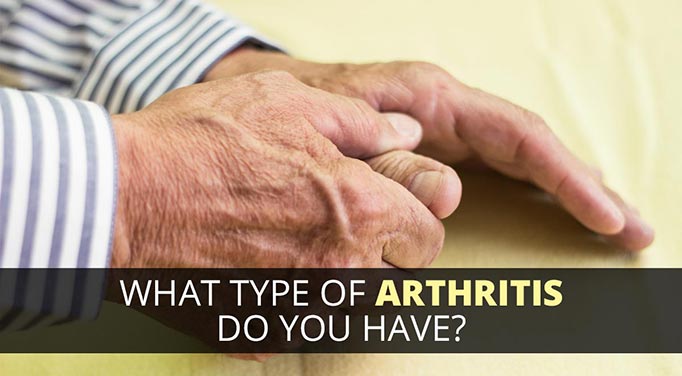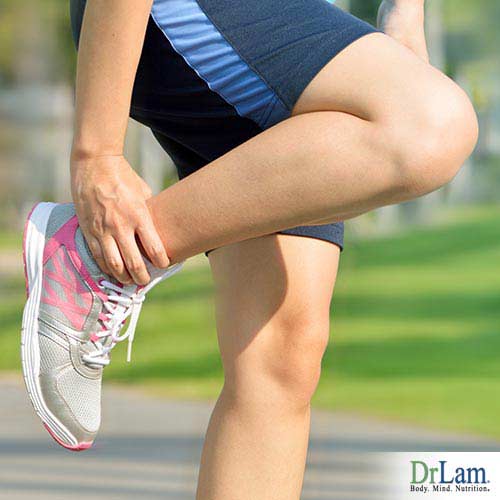 Arthritic joint pain can undermine your health and greatly affect your sense of well-being. Millions of people worldwide suffer from arthritis. With the rise in myriad health issues such as diabetes, heart disease, and high blood pressure, arthritis problems often go ignored. However, the disease is increasing at an alarming rate, and it is more serious than most of us realize. Arthritis can cause some serious damage to your joints and in severe cases can lead to joint deformity. Arthritis-related diseases can lead to debilitating and life-changing pain.
Arthritic joint pain can undermine your health and greatly affect your sense of well-being. Millions of people worldwide suffer from arthritis. With the rise in myriad health issues such as diabetes, heart disease, and high blood pressure, arthritis problems often go ignored. However, the disease is increasing at an alarming rate, and it is more serious than most of us realize. Arthritis can cause some serious damage to your joints and in severe cases can lead to joint deformity. Arthritis-related diseases can lead to debilitating and life-changing pain.
Over one-third of the adults with arthritis have reported that the pain limits their everyday work and leisure activities. Further, over 25 percent of the affected people experience severe pain. According to estimates, over 22.7 percent of U.S adults develop arthritis annually. Interestingly, incidences of arthritis are lower in non-western cultures. The underlying secret is eating a diet low in inflammatory foods and maintaining a healthy exercise regimen.
Arthritis means inflammation of joints. We all experience inflammation at some point in our lives. The most common reason for inflammation is an injury. For instance, you may accidentally fall and injure your ankle. The injured part gets red, hot, and inflamed. Further, your ankle swells up and is painful. These symptoms of acute inflammation are all part of the natural healing process. When you get injured, more blood flows to the area bringing in additional white blood cells. As a result, the injured part gets swollen and limits mobility which prevents any further damage. The complete process allows self-healing.
There are several causes of inflammation. Likewise, the type of arthritis also varies accordingly. Initial inflammation from injury gradually subsides with healing. However, continuous inflammation over a long duration can lead to arthritis, which can debilitate joints, making them dysfunction and permanently deformed.
There are several types of arthritis. Osteoarthritis and rheumatoid arthritis are the most common forms of arthritis. The less common types of arthritic joint pain include gout, psoriatic arthritis, ankylosing spondylitis, and lupus erythematosus. Genetic predisposition is one of the factors contributing to rheumatoid arthritis.
As the most common types, osteoarthritis and rheumatoid arthritis will be our focus here.
Osteoarthritis, also referred to as degenerative joint disease, is the most common type of arthritis. This form of arthritis is most frequently seen in joints that are excessively used and abused. Osteoarthritis is associated with the breakdown of cartilage in joints, especially in weight-bearing joints such as in the knees, hips, and spine. This degeneration and inflammation can develop in single or more joints including fingers, toe, thumb, elbow, wrist, and neck.
Though early-stage osteoarthritis might be painless, as the diseases progress it develops into a deep ache which can often restrict movement of the affected joint. There can be symptoms of joint stiffness upon waking up or after resting, but the problem gradually subsides after moving around a little.
The various symptoms of osteoarthritis include:
Joint overuse is the major cause of osteoarthritis. However, the disease might also occur due to other reasons. Here are some of the factors which might contribute to osteoarthritis:
Many people think that osteoarthritis is a disease of aging, but this is a myth. The disease certainly does not occur just because you are getting older. In fact, osteoarthritis is just not restricted to age but can affect people in their twenties and thirties as well. According to surveys, by the age of 30, over 35 percent of people are beginning to experience signs of osteoarthritis in their knee joints, and by the age of 70 – 79 years, it is estimated that at least 85 percent of individuals have osteoarthritis. The underlying truth is that whether you develop the disease or not largely depends on the lifestyle you lead.
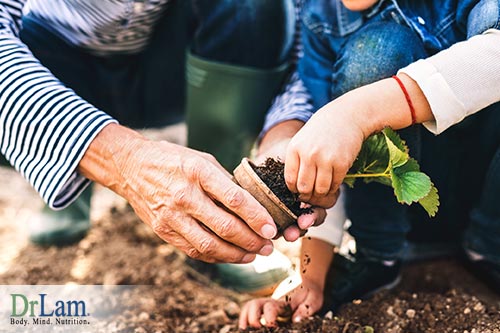 Almost any joint can develop osteoarthritis. The most often used joints in your body are most vulnerable to the disease. For example, tailors tend to develop osteoarthritis in their hands, wrists, and fingers, whereas security guards tend to develop the problem in their lower back, knees, and ankles due to long standing hours. Obese people are prone to inflammation in their knees, ankles, and hips. Typically, the disease affects a single or a few joints.
Almost any joint can develop osteoarthritis. The most often used joints in your body are most vulnerable to the disease. For example, tailors tend to develop osteoarthritis in their hands, wrists, and fingers, whereas security guards tend to develop the problem in their lower back, knees, and ankles due to long standing hours. Obese people are prone to inflammation in their knees, ankles, and hips. Typically, the disease affects a single or a few joints.
Natural pain relief techniques and alternative therapies can help alleviate osteoarthritis. Regular exercise, weight control, and healthy activities can help reduce severity and symptoms of the disease.
Rheumatoid arthritis is an autoimmune disorder. Here your immune system mistakenly attacks your body tissues. This type of arthritis belongs to the category of immune complex diseases or antibody/antigen diseases.
Unlike osteoarthritis which involves degeneration of joints, in rheumatoid arthritis, the thin tissue lining of your joints, known as synovium, is the main tissue affected, which causes painful swelling and eventually leads to bone erosion and joint deformity. The inflammation also spreads to other body parts causing ongoing pain, swelling, fatigue, and various other problems.
This type of arthritis is a chronic inflammatory disorder which affects not only joints but also can damage various organs including the eyes, skin, heart, lungs, and blood vessels. In certain cases, severe rheumatoid arthritis may lead to physical disabilities.
Further, unlike in osteoarthritis where inflammation often occurs in a single joint, rheumatoid arthritis affects the peripheral joints as well, especially the elbows, hands, knees, and feet.
Joints on both sides of the body are affected equally, such as both the knees and wrists. This type of symmetrical effect helps to distinguish rheumatoid arthritis from other types of arthritic joint pain.
The effect of rheumatoid arthritis varies from person to person. In some people, the joint symptoms may gradually develop over several years, whereas in others the symptoms may occur quickly. Some people may also experience pain for a short duration after which the symptoms subside.
The initial stage of rheumatoid arthritis tends to affect the smaller joints first, especially the joints which connect the fingers to hands and toes to feet. As the disease advances, the symptoms often start spreading to the wrists, elbows, shoulders, knees, hips, and ankles.
The major distinguisher of rheumatoid arthritis is that it affects the same joints on both sides of the body.
The other symptoms of the disease include:
 The disease can also affect the other body organs. It has been observed that over 40 percent of people with rheumatoid arthritis also develop signs and symptoms which do not affect the joints. Rheumatoid arthritis can affect non-joint structures including eyes, skin, heart, lungs, bone marrow, kidneys, nerve tissues, salivary glands, and blood vessels. The severely of the signs and symptoms may vary, as well as appear and subside. The person may experience flares and remission. Over time, rheumatoid arthritis can deform the joints.
The disease can also affect the other body organs. It has been observed that over 40 percent of people with rheumatoid arthritis also develop signs and symptoms which do not affect the joints. Rheumatoid arthritis can affect non-joint structures including eyes, skin, heart, lungs, bone marrow, kidneys, nerve tissues, salivary glands, and blood vessels. The severely of the signs and symptoms may vary, as well as appear and subside. The person may experience flares and remission. Over time, rheumatoid arthritis can deform the joints.
Doctors are unsure what actually causes rheumatoid arthritis, though some researchers suggest that a bacterial infection might trigger this type of arthritic joint pain in some people. However, scientists have not yet discovered a particular triggering bacteria, virus, or organism.
In rheumatoid arthritis, as the body’s immune system attacks its own healthy tissues, a chain of chemical reaction occurs leading to inflammation and damage. In this process, a thin layer of tissue around the joint known as the synovium is mainly targeted. With inflammation, the synovium thickens, which eventually destroys the cartilage and the bone within the joint. The tendons and ligaments holding the joint together then start to weaken and stretch. Gradually, the affected joint starts to lose its shape and alignment, leading to joint deformity.
Factors which might cause rheumatoid arthritis include:
Almost anyone can develop rheumatoid arthritis. However, the chance of developing the disease is found to be higher in women than in men. Further, the problem is more likely to affect lactating mothers or women who have never been pregnant. The disease is also hereditary. Though this type of arthritic joint pain can occur with age, it is not a normal part of the aging process.
Surgery, medicine, and alternative therapies can help alleviate the problem of rheumatoid arthritis. Getting regular rest, taking care of the joints, reducing stress levels, and eating a healthy diet can help ease the severity and symptoms of the disease.
In rheumatoid arthritis, an inflammatory autoimmune disease, adrenal function plays a complex role. The interaction of adrenal hormones with the immune system can influence both the development and progression of the disease.
Rheumatoid arthritis can act as a stressor and trigger symptoms of adrenal fatigue. Frequently experiencing extreme fatigue along with symptoms of low energy levels, insomnia, anxiety, low concentration level, difficulty in waking up and brain fog can be due to Adrenal Fatigue Syndrome (AFS).
AFS sufferers experience an array of non-specific symptoms, and joint pain is one of them. People with arthritic joint pain may not have AFS, but many of them do have overworked adrenal glands. In such cases, adrenal yoga exercises can help strengthen the body’s core as well as accelerate the adrenal recovery process.
Imbalance in cortisol, an adrenal hormone, can cause several negative effects, including AFS and inflammatory autoimmune disease that can trigger or exacerbate conditions such as rheumatoid arthritis. Stress is a major contributor to cortisol imbalance.
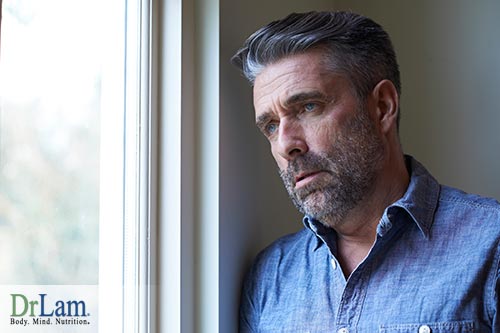 Your body is equipped with a NeuroEndoMetabolic (NEM) Stress Response which helps deal with stress. During stressful situations, the NEM stress response signals your adrenal glands to secrete the stress fighting hormone cortisol. This hormone secretion is more during stress. However, constant stress overburdens your adrenals, affecting your cortisol secretion capacity and resulting in a drop in cortisol levels. Such hormone imbalance leads to various negative effects such as fatigue and rheumatoid arthritis.
Your body is equipped with a NeuroEndoMetabolic (NEM) Stress Response which helps deal with stress. During stressful situations, the NEM stress response signals your adrenal glands to secrete the stress fighting hormone cortisol. This hormone secretion is more during stress. However, constant stress overburdens your adrenals, affecting your cortisol secretion capacity and resulting in a drop in cortisol levels. Such hormone imbalance leads to various negative effects such as fatigue and rheumatoid arthritis.
When adrenal function is low, such as during adrenal fatigue, the low cortisol level is insufficient to deal with inflammation in the body. Further, with adrenal fatigue, arthritic joint pain seems more intense.
Use of corticosteroids (synthetic cortisol) to reduce arthritis pain should be avoided. Though the this can provide short-term relief from arthritis, it can interfere with the body’s natural cortisol secretion. This can harm the adrenals and immune function, thus aggravating AFS and rheumatoid arthritis symptoms. Maintaining healthy functioning adrenals is best for people with AFS and rheumatoid arthritis.
Western medicines and surgery often don’t solve the problem. They can help to lessen the pain, but do not provide a permanent solution. However, focusing on cultivating a healthy lifestyle with exercise and a plant-based diet can help to ease arthritic joint pain and sometimes even eliminate the problem.
Here are some useful tips which can help reduce symptoms of arthritic joint pain:
Arthritic joint pain can make everyday tasks difficult and cripple your life. Among the several types of arthritis, osteoarthritis and rheumatoid arthritis are the most common ones.
Joint overuse causes osteoarthritis, which affects single or more joints. The joint cartilages degenerate causing inflammation, pain, swelling, tenderness, and stiffness.
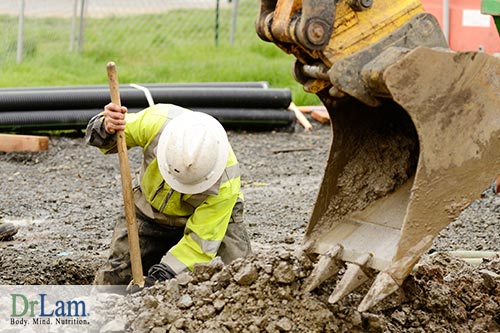 Rheumatoid arthritis is an autoimmune disorder. Your immune system mistakenly attacks your own body tissues. Synovium, a thin tissue lining around the joint is mainly affected, resulting in painful swelling, fatigue, and joint deformity in severe cases. The disease affects joints on both sides of the body. It can also damage other body parts including eyes, skin, heart, lungs and blood vessels.
Rheumatoid arthritis is an autoimmune disorder. Your immune system mistakenly attacks your own body tissues. Synovium, a thin tissue lining around the joint is mainly affected, resulting in painful swelling, fatigue, and joint deformity in severe cases. The disease affects joints on both sides of the body. It can also damage other body parts including eyes, skin, heart, lungs and blood vessels.
Arthritic joint pain affects each person differently. However, for those with AFS, the severity of the pain can be worse. Gaining more awareness about the disease, keeping a positive attitude, practicing exercise, eating nutritious food, and minimizing stress in life can help reduce the symptoms and support your well-being.
© Copyright 2018 Michael Lam, M.D. All Rights Reserved.
Eat a nutritious diet filled with vegetables, fruits, and whole grains to help maintain your ideal weight and ease the stress on joints. Following a plant-based diet is considered best for arthritic joint pain. Cabbage, Brussel sprouts, broccoli, walnuts, flax seeds, chia seeds, ginger, cinnamon, turmeric, strawberries, and grapes can all help reduce inflammation.
